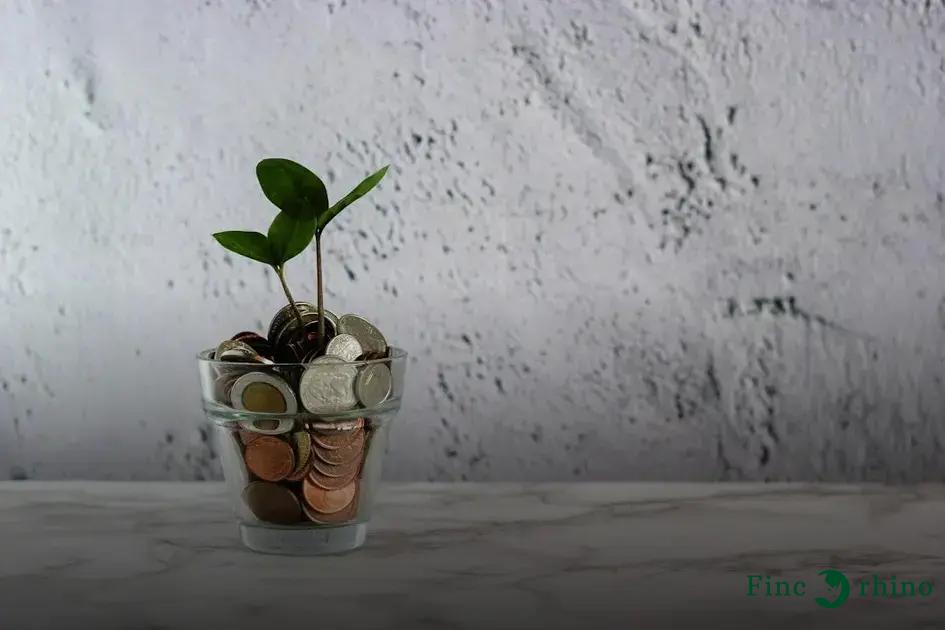Minimalism and Money intertwine to show how reducing what’s unnecessary can positively impact your financial stability. Embracing fewer possessions not only streamlines your life but also opens up opportunities to allocate resources better. As you begin this journey, you’ll find that clarity and simplicity bring not just peace of mind, but also improved financial health. Dive deeper to explore how each step towards minimalism could strengthen your financial foothold.
Understanding the Principles of Minimalism
Minimalism, at its core, is about eliminating excess in all areas, including financial. By understanding its principles, we can simplify our financial choices and align them with our true values. The first principle is intentionality—this means making conscious decisions about what to keep and where to spend our money. By focusing only on what truly adds value to our life, we eliminate wasteful expenditures.
Prioritization
is another key principle. It’s about identifying what is most important and allocating resources accordingly. This helps in creating a financial strategy that doesn’t get bogged down by unnecessary distractions. A minimalist approach to money often leads to clearer financial goals, enabling individuals to make smarter investment choices.
Simplicity
in managing finances often leads to better control over personal finance. Reducing the number of financial accounts, subscriptions, or debts can streamline financial management. It’s not just about cutting back but about refining focus, channeling energy towards making the money work more effectively, and appreciating the value of every purchase.
Lastly, minimalism encourages living within our means by fostering contentment with less. This curtails the desire for unnecessary consumption, reducing financial stress. Understanding these principles helps create a sustainable lifestyle where financial choices are clearer, allowing for long-term success without the clutter of excess spending.
Financial Freedom Through Decluttering
One path to financial freedom is embracing the concept of decluttering. By removing excess, both physical and mental, from our lives, we allow more space for what truly matters, including our finances. Decluttering isn’t just about tidy spaces; it’s strategically managing your resources.
When considering the link between minimalism and financial health, one key aspect is reducing unnecessary expenses. Begin by assessing and categorizing expenditures. It often turns out that many items or services we cling to don’t add value to our lives. Reducing these can free up significant amounts of money.
This money saved from decluttering can now be directed towards more meaningful goals. Consider setting up emergency funds or increasing your investment contributions. A minimalist mindset encourages you to put your resources into areas that cultivate growth and security.
Moreover, decluttering helps alleviate the cognitive load. Often, financial stress arises from the overwhelming number of things or activities tied to money. Simplifying life can lead to better decision-making as your focus improves, resulting in judicious financial choices.
Another benefit of decluttering is appreciating what you already possess. This shift in perspective can significantly curb desires for unnecessary purchases, reducing impulsive spending. Each item retained has a purpose and brings value.
Lastly, consider selling items you no longer need. It can be both a cleansing exercise and a financial gain. This process not only enhances your living space, but it also boosts your financial resources. The funds obtained can be redirected towards debt reduction or aligned with your minimalist goals.
Through decluttering, minimalism lines up with financial discipline, carving a path to financial independence.
Creating a Budget with Minimalist Goals
When constructing a budget with minimalist goals, focus on cutting out non-essential expenses. Assess what truly brings value to your life and eliminate costs that don’t. Begin by listing all your monthly expenses and identify categories that can be reduced or eliminated. Utilize tools and apps to track your spending habits and gain insight into unnecessary expenditures.
Next, set realistic and clear financial goals that align with your minimalist principles. Whether it’s saving for a specific purpose or building an emergency fund, ensure your targets are attainable. Break down larger goals into smaller, more manageable steps. This approach makes progress tangible and boosts motivation.
Prioritize needs over wants by distinguishing between essential bills and discretionary spending. Allocate money towards needs first and limit the funds available for wants. Embrace a mindset of simplicity, where accumulating experiences and memories outweighs accumulating things. This shift can lead to significant savings and a more fulfilling life.
Reassess and adjust your budget regularly. A minimalist approach is flexible, allowing for changes as your life evolves. By remaining adaptable, you’ll ensure that your budget continues to reflect your true values and objectives.
The Impact of Owning Less on Mental Health
Owning less can have a profound impact on mental health by reducing stress and anxiety. When individuals embrace a minimalist lifestyle, they remove the clutter that often contributes to overwhelming feelings. Reducing possessions means fewer decisions about maintenance, insurance, and replacement, allowing more mental bandwidth for important life decisions.
Minimalism promotes mindfulness because it encourages people to focus on what truly matters. By prioritizing meaningful activities and relationships, individuals can achieve greater clarity and emotional well-being. This shift can lead to a stronger sense of purpose, as possessions no longer dictate one’s identity or happiness.
Debt reduction is another significant aspect as it alleviates unease regarding financial burdens. By spending less on material items, individuals have more resources to allocate towards experiences that elevate their mood, such as travel, hobbies, and personal growth. This shift can boost self-esteem and confidence, allowing individuals to feel more in control of their lives.
Investing Saved Money from Minimalist Living
When you embrace minimalist living and find yourself with some savings, considering the right way to invest that money becomes crucial. Minimalism is not just about having fewer items; it’s about making intentional choices that align with a simpler lifestyle. Therefore, your investment options should reflect those values. Here are several strategies to consider:
- Emergency Fund: Before diving into other investments, ensure you have an emergency fund. This fund acts as a safety net, providing financial security for unexpected expenses.
- Low-Cost Index Funds: Investing in low-cost index funds is a practical way to grow your savings. These funds provide diversification and typically involve fewer fees, aligning with a minimalist’s goal of simplicity.
- Pay Off Debt: Use some of the money saved from downsizing to pay off high-interest debt. Reducing debts increases your disposable income and contributes to a stress-free financial life.
- Retirement Accounts: Consider contributing to retirement accounts like an IRA or 401(k). These accounts are beneficial for long-term growth and often offer tax advantages.
- Invest in Skills or Education: Investing saved money in learning new skills or pursuing educational opportunities can enhance your professional life and lead to long-term success.
It’s vital to align your investment choices with the minimalist values of simplicity and intentionality. This approach ensures not only financial growth but also peace of mind, knowing your investments reflect your commitment to a minimalist lifestyle.
Sustaining the Minimalist Lifestyle Long-Term
Maintaining a minimalist lifestyle over time requires a steady commitment to the core values of simplicity and mindfulness. One effective way to achieve this is by regularly assessing and evaluating your possessions and habits. Ask yourself, do these items or activities bring real joy or value to your life? If not, consider letting them go.
Strategic Planning is key to sustaining minimalism. Set long-term minimalist goals that align with your financial objectives. For instance, aim to only purchase essential items that you truly need, thereby preventing clutter and unnecessary spending.
Practice the art of saying no. It’s vital to remain conscious of new potential commitments or purchases. Before acquiring anything new, reflect on whether it complements your minimalist values and lifestyle. Sticking to this mindful approach prevents the accumulation of unnecessary items.
Another significant aspect is to adapt to life’s changes. Minimalism is not a rigid framework but a flexible approach that can change as your life evolves. Whether you are shifting careers, moving to a new place, or starting a family, it’s essential to adapt your minimalist practices to fit your current situation.
Engage with minimalist communities online or locally. Sharing experiences and tips with others can give you new perspectives and strategies to keep your minimalist journey aligned with your personal and financial goals.
Finally, continuously revisit your motivations for embracing minimalism. Remind yourself why you chose this path initially – to prioritize happiness over possessions, to achieve financial goals, or to focus on what truly matters. These reflections can act as a compass, guiding you and helping to sustain the minimalist lifestyle for the long haul.





